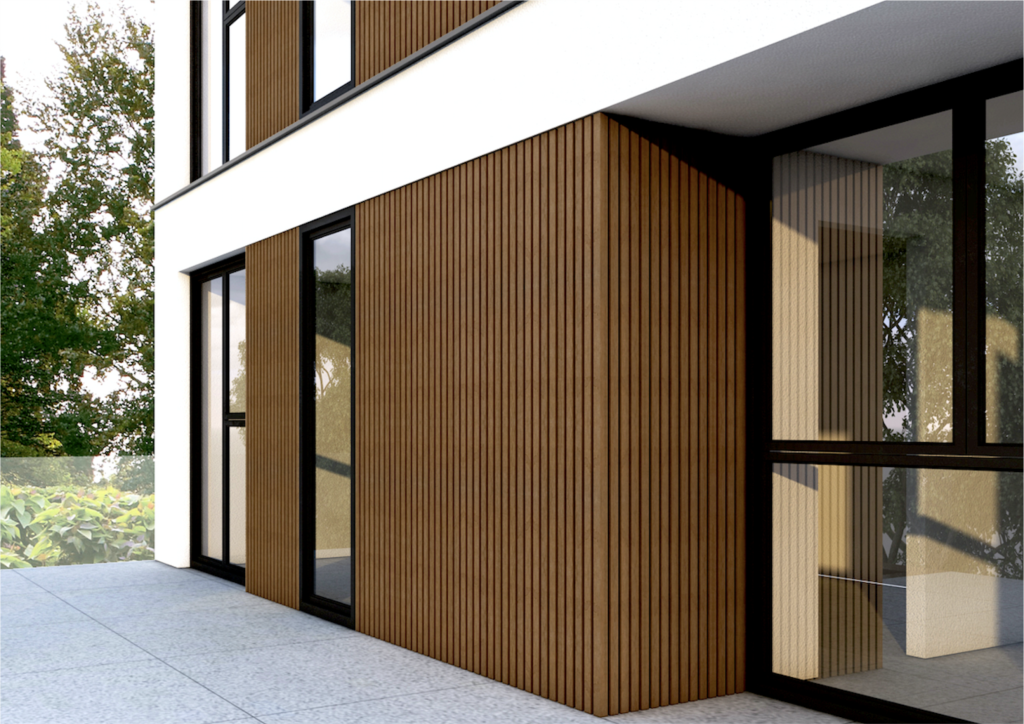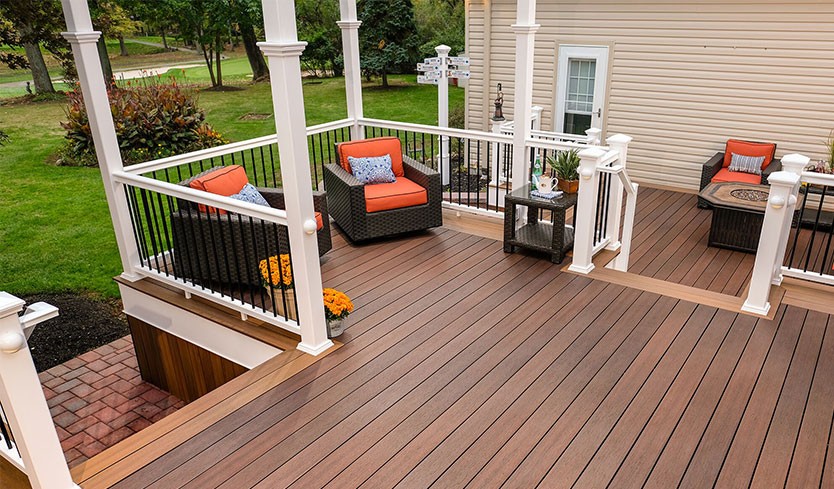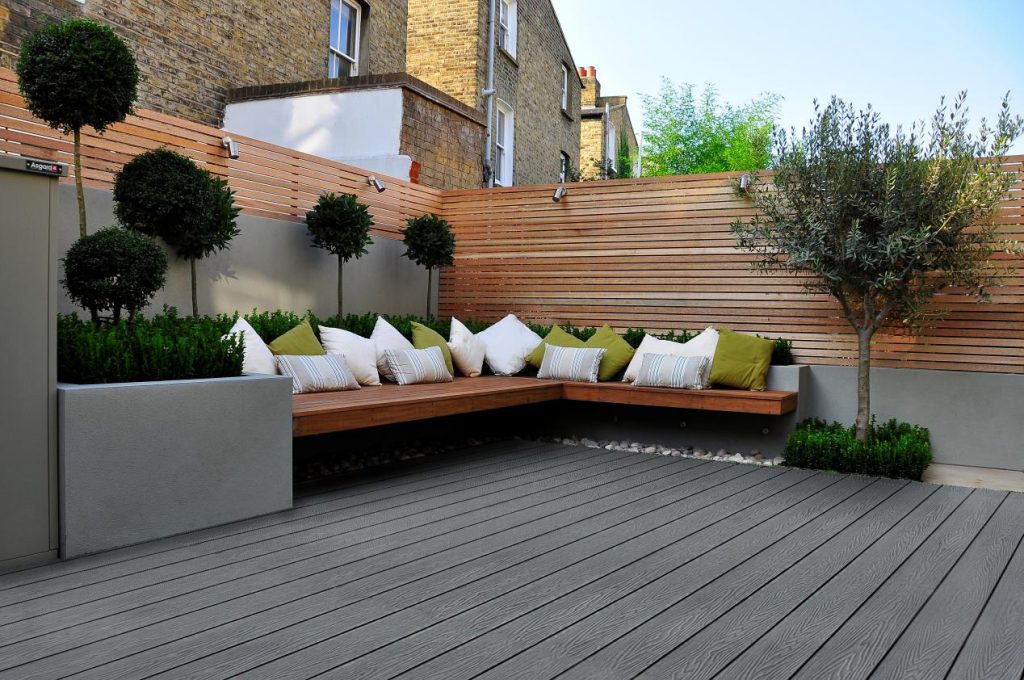As outdoor construction materials advance, WPC panels for exterior walls have become a practical and popular choice over traditional wood, fiber cement, and metal cladding. Made from a blend of wood fibers and plastic, WPC offers a unique mix of durability, low maintenance, weather resistance, and modern style. Ideal for homes, commercial buildings, and outdoor spaces, WPC panels are eco-friendly and long-lasting. In this guide, we’ll highlight the key benefits of WPC exterior wall panels, compare them to other materials, and explain why they’re a leading solution in today’s exterior design and architecture.
Table of Contents
What Are WPC Panels for Exterior Use?
WPC panels are composite cladding boards made from a combination of recycled wood fibers and thermoplastic polymers. This unique material blend results in panels that mimic the natural aesthetics of wood while providing enhanced resistance to moisture, insects, rot, and UV exposure. As sustainability becomes more important in construction, WPC panels offer an environmentally friendly alternative that doesn’t sacrifice performance. These panels are widely used in both new construction and remodeling projects thanks to their adaptability and modern appearance.
1.1 Key Properties of WPC Exterior Panels
Water-resistant: Unlike traditional timber, WPC doesn’t absorb water, making it ideal for all climates, including coastal areas and regions with heavy rainfall.
Anti-fade: UV resistance ensures color remains vibrant even after years of exposure to direct sunlight and harsh environmental conditions.
Low maintenance: No need for regular sanding, painting, or sealing, which saves time and long-term maintenance costs.
Eco-friendly: Manufactured using recycled materials, WPC contributes to reduced deforestation and lower plastic waste.
Fire-resistant: Some grades offer Class B or Class A fire ratings, enhancing building safety, especially for public or multi-residential structures.
These properties make WPC panels for exterior use highly reliable and efficient, especially in areas prone to rain, intense sunlight, or rapid temperature fluctuations. Their durability and resistance allow them to maintain their appearance and integrity for many years, even under harsh conditions.

Advantages of WPC Exterior Wall Cladding
2.1 Aesthetic Appeal
WPC exterior wall cladding comes in a wide range of colors, textures, and patterns, replicating various wood grains like teak, oak, walnut, or cedar. Whether your project demands a rustic, modern, or minimalist look, WPC has a solution. The flexibility in design allows architects and designers to create unique, eye-catching façades that enhance property value. Additionally, the uniformity in color and grain ensures consistency across large installations, making it ideal for commercial and residential projects alike.
2.2 Weather Resistance
One of the major reasons designers choose exterior WPC wall panel products is their resistance to environmental factors. Traditional wood expands, contracts, and decays over time. WPC panels remain stable and intact. Their resilience against moisture, wind, UV rays, and temperature fluctuations makes them suitable for all climate zones—from humid tropics to dry deserts. This all-weather capability greatly reduces the chances of cracking, warping, and other structural problems that occur with conventional wood cladding.
2.3 Long Lifespan
WPC cladding can last for over 20 years with minimal maintenance, making it a cost-effective option in the long run. Unlike wood, it doesn’t require yearly treatments or coatings, and its structural integrity holds up over time. This long service life is especially beneficial in large-scale or public-facing projects where repair work can be expensive and time-consuming. As a result, many developers and builders are shifting toward WPC for its strong return on investment and performance consistency over time.
2.4 Pest and Mold Resistance
Unlike wood, WPC is impervious to termites and other pests. It’s also mold- and mildew-resistant, which is crucial for humid and rainy climates. This resistance ensures the panels don’t weaken, discolor, or rot, maintaining both appearance and strength. With WPC, property owners avoid the costly pest treatments and mold remediation efforts often associated with wood siding. These features make it particularly ideal for use in coastal areas, forest-adjacent locations, and properties with lush landscaping that might attract moisture.
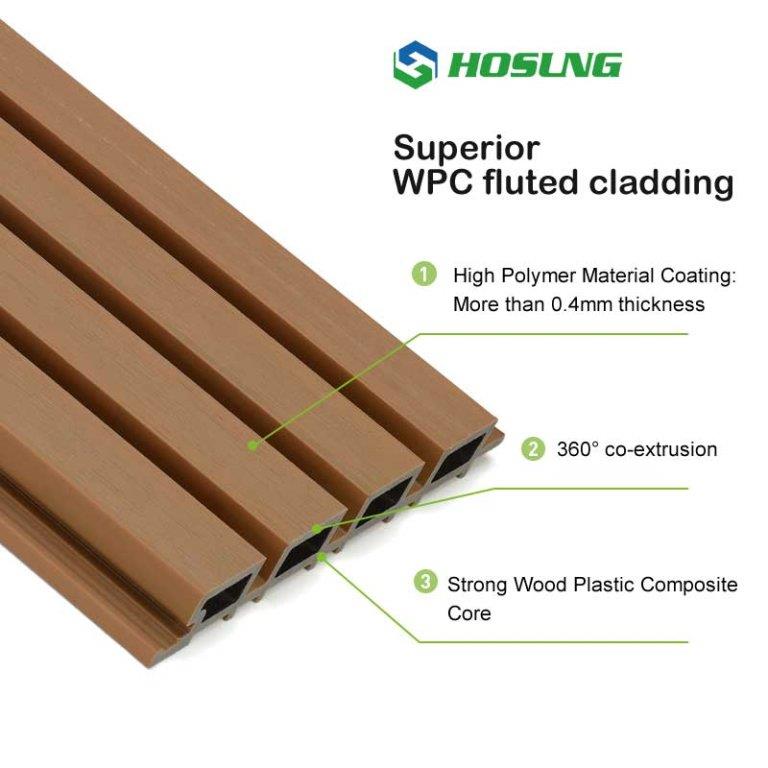
Where to Use WPC Panels for Exterior Applications
WPC wall panels are highly versatile. Here are common applications:
Residential façades: Elevate the curb appeal of modern homes by adding rich textures and warm tones.
Garden and patio walls: Blend your landscape with nature using panels that harmonize with greenery and outdoor furniture.
Commercial buildings: Enhance brand value with premium aesthetics that signal professionalism and quality.
Hotels and resorts: Offer a tropical or natural look that aligns with guest experiences, creating a luxurious and inviting atmosphere.
Educational or institutional buildings: Combine safety with contemporary design, creating welcoming and durable environments.
Whether used vertically or horizontally, WPC cladding contributes to both the performance and appearance of any exterior structure. Its ability to seamlessly integrate with various architectural styles makes it a flexible solution for diverse projects.

WPC Outdoor Wall Panel Designs
4.1 Groove and Tongue Style
These interlocking panels offer a seamless look while preventing water ingress. Suitable for both vertical and horizontal mounting, they create a clean, unified surface with minimal visible gaps. This style also provides excellent insulation and moisture protection, making it ideal for both residential and commercial buildings. The precise interlocking system reduces installation time and improves overall weatherproofing, ensuring a sleek and secure finish for modern exterior walls.
4.2 Slatted Cladding
Provides a modern appearance with ventilated gaps. Ideal for contemporary homes and cafes, slatted WPC designs introduce shadow lines and depth to the exterior. The spacing between slats can also promote air circulation, which is beneficial in hot climates. Designers often use slatted cladding to add texture or contrast to a structure’s exterior, making it a popular choice for statement façades, privacy screens, or partial feature walls.
4.3 3D Embossed Panels
These panels offer texture and depth, giving buildings a dynamic, high-end look. With embossed grains and raised patterns, they replicate the authentic feel of real wood or natural stone. The 3D surface not only enhances aesthetics but also provides a tactile experience, which adds a sense of craftsmanship to any building. This style is often used in upscale homes, hotels, or showrooms where design impact matters.
4.4 Custom Color Panels
While natural wood tones are common, many manufacturers offer customizable colors, including anthracite, charcoal, walnut brown, and ivory white. This flexibility allows architects and homeowners to match the exterior panel colors with window trims, roofing, or surrounding landscaping. In urban settings, bold colors like slate gray or jet black can offer a sleek, industrial appeal. In rural areas, earthy tones help blend structures into their natural environment.
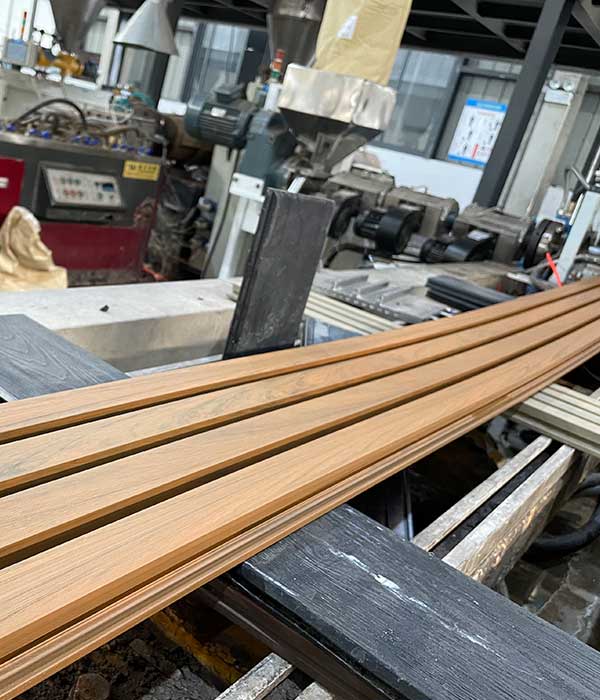
Comparison with Other Exterior Cladding Materials
| Feature | WPC Panels for Exterior | Natural Wood | Fiber Cement | PVC Panels |
|---|---|---|---|---|
| Water Resistance | Excellent | Poor | Good | Excellent |
| Maintenance | Low | High | Medium | Low |
| Lifespan | 20–30 years | 5–15 years | 15–25 years | 10–20 years |
| Environmental Impact | Recycled material | Deforestation | High energy use | Mixed |
| Aesthetic Variety | High | Medium | Low | Medium |
| Installation Difficulty | Medium | Medium | High | Low |
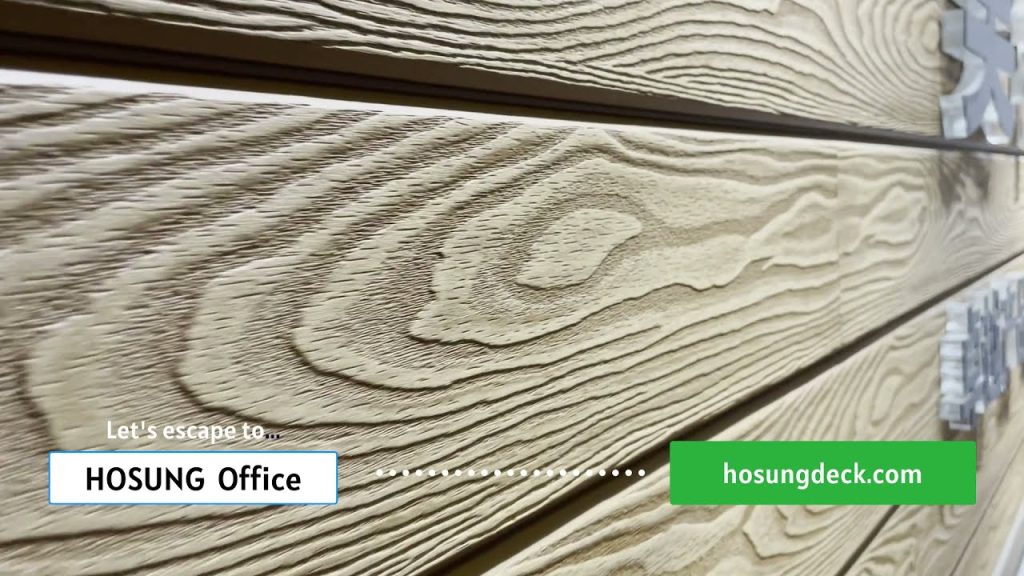
Installation Guide for WPC Exterior Panels
Proper installation enhances durability and appearance. Here’s a basic outline:
6.1 Surface Preparation
Ensure the wall surface is clean, flat, and dry. Use a water-resistant barrier if installing over masonry.
6.2 Furring Strips
Fix vertical or horizontal wooden or metal battens (based on the panel design). Keep proper spacing (usually 40–60 cm apart).
6.3 Panel Installation
Start from the bottom and work upward.
Use stainless steel screws or hidden clips.
Allow expansion space between panels.
Seal cut edges if exposed to constant water.
6.4 Finishing
Use corner trims, L-sections, or end caps for a refined look.
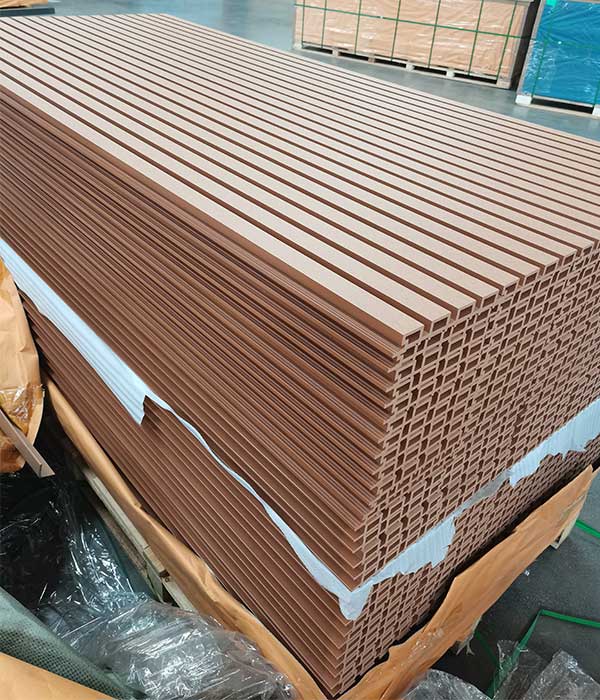
Maintenance Tips for WPC Outdoor Wall Panels
Though low maintenance, a few practices can extend their life and preserve their visual appeal over time.
Regular cleaning: Use a mild detergent and soft brush to remove dust, stains, and mildew. Routine washing every 3–6 months helps keep the surface looking fresh, especially in dusty or rainy regions.
Avoid high-pressure washers: They can damage the surface texture and compromise the protective layer. Instead, opt for garden hoses with adjustable nozzles.
Check fasteners annually: Especially in high-wind areas or coastal zones, inspect screws or clips for corrosion or loosening and replace if needed. Preventive maintenance ensures long-term performance and safety.
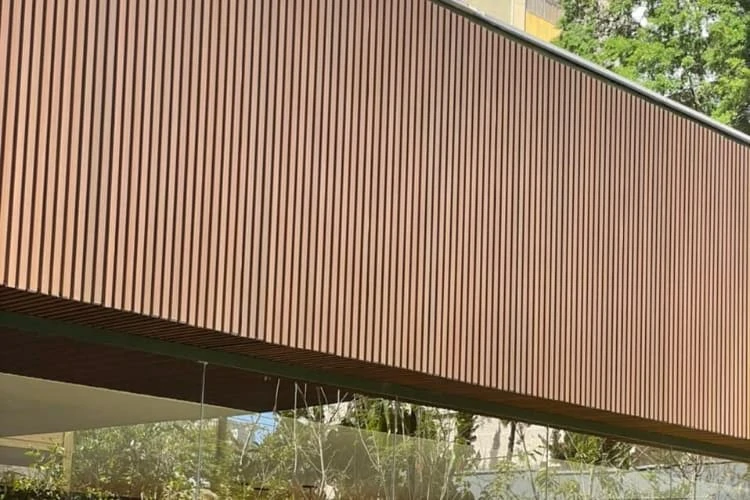
WPC Outdoor Wall Panel Price Guide
When planning your budget, wpc outdoor wall panel price depends on several important factors.
- Panel size and thickness: Thicker panels cost more but provide better sound insulation, rigidity, and durability over time.
- Surface finish: 3D embossed, brushed, or UV-coated surfaces usually command a premium price due to added complexity and aesthetics.
- Brand and country of origin: European WPC panels are often more expensive due to strict quality standards and shipping costs. Asian suppliers typically offer more affordable options.
- Volume and shipping: Bulk purchases often include discounts, especially for commercial projects. Don’t forget to account for freight, taxes, and handling costs when importing.
Sample Pricing Table
| Product Type | Thickness | Size (mm) | Price (USD/sqm) |
|---|---|---|---|
| Basic WPC flat panel | 12mm | 150×2900 | $18–$22 |
| Groove tongue cladding | 15mm | 170×3000 | $22–$28 |
| 3D embossed WPC panel | 20mm | 200×3000 | $30–$38 |
Note: Prices are indicative and vary based on supplier, market, currency fluctuations, and logistics costs. Buyers should always request official quotations and samples before ordering large volumes.
Choosing the Right WPC Panels for Your Exterior Project
Selecting the right wpc panels for exterior applications depends on multiple practical and aesthetic considerations.
- Consider Climate: In hot and humid areas, UV-resistant and anti-fungal WPC panels prevent fading and surface growth. Cold climates benefit from impact-resistant grades that withstand freezing and thaw cycles without cracking.
- Architectural Style: Modern homes look great with slatted or 3D textures that add depth and character, while rustic or traditional homes pair well with flat woodgrain finishes that replicate timber charm.
- Building Type: Commercial buildings often require panels with fire ratings and color stability. Residential users prioritize cost-effectiveness and variety, while industrial facilities need heavy-duty panels with enhanced resistance.
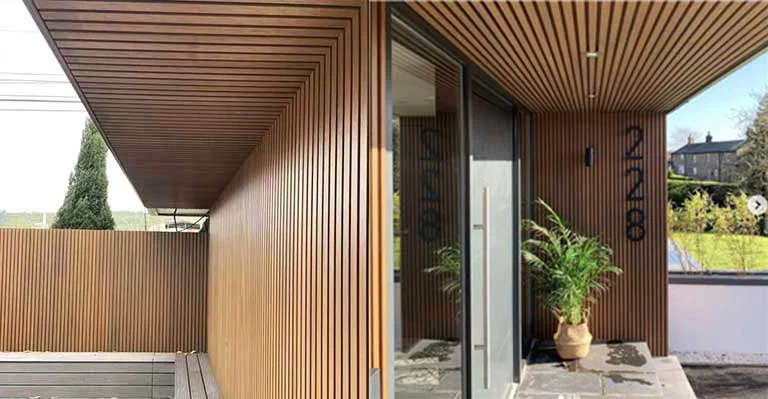
Leading Suppliers and Brands of WPC Exterior Panels
Many manufacturers offer wpc panels for exterior with varying quality and certification standards.
When sourcing, look for suppliers that adhere to global testing benchmarks like:
ISO 4892-3 for UV resistance, ensuring color durability under sunlight exposure.
ASTM D7032 for structural performance, which assesses load-bearing ability.
EN 13501-1 for fire safety classification, a must-have for public buildings and high-rise projects.
Reputable suppliers will gladly provide samples, technical data sheets, product warranties, and third-party test reports. Establishing relationships with trusted manufacturers ensures product consistency and after-sales support for future projects.
Sustainability and Environmental Impact
WPC panels are widely regarded as an eco-friendly choice due to their recycled content and long service life.
Typically composed of:
60% recycled wood powder sourced from woodworking industries
30% recycled plastic, usually post-consumer HDPE
10% additives, including anti-UV agents, stabilizers, and color pigments
By using wpc exterior wall cladding, you help reduce deforestation, lower landfill contributions, and avoid toxic chemicals used in wood preservation. In many countries, WPC qualifies for green building credits, such as LEED or BREEAM, making it a smart choice for sustainable construction and environmentally conscious architecture.
Common FAQs About WPC Outdoor Wall Panels
Q1: Do WPC panels fade over time?
Yes, slight fading may occur within the first 6–12 months due to sun exposure. However, quality panels contain UV stabilizers that reduce discoloration significantly. Some brands also offer warranties against fading.
Q2: Are WPC panels recyclable?
Absolutely. Most WPC panels are 100% recyclable and can be ground down and re-extruded into new boards, contributing to a closed-loop manufacturing process and reduced waste.
Q3: Can I paint WPC panels?
While it’s technically possible to paint them using plastic-compatible coatings, it’s usually unnecessary. Panels are factory-colored and sealed, retaining their appearance for years without repainting.
Q4: Are WPC wall panels fireproof?
Not all WPC products are fire-rated. Always check for specific fire classification like Class B or Class A if required by local building codes. Fire-rated panels are specially formulated with flame-retardant additives for added safety.
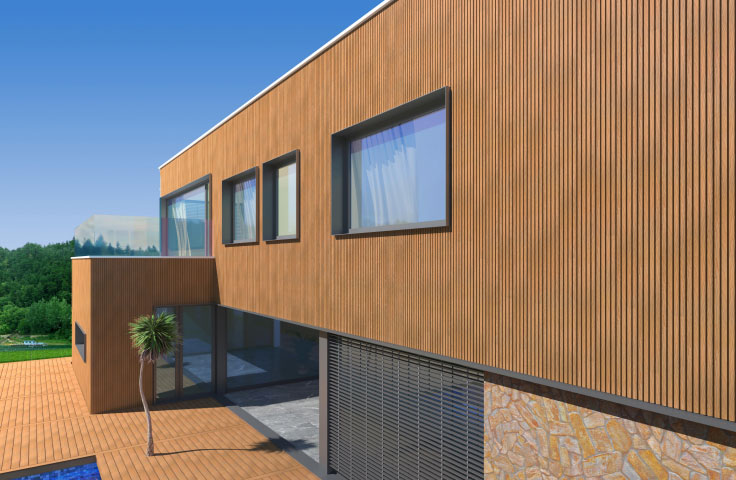
Conclusion: Is WPC the Best Choice for Your Exterior Wall?
If you’re searching for a long-lasting, stylish, and low-maintenance exterior cladding option, WPC panels for exterior should be at the top of your list. Their outstanding resistance to moisture, insects, UV rays, and fading makes them ideal for diverse outdoor applications.
From enhancing the aesthetic appeal of homes to improving the durability of commercial buildings, WPC offers a balanced combination of beauty and performance. With a growing selection of styles, colors, and certifications—plus competitive wpc outdoor wall panel price points—it’s no surprise that WPC is becoming a top choice among architects, developers, and homeowners worldwide.
Want to get wholesale WPC Panels? Welcome to contact Hosung WPC!

